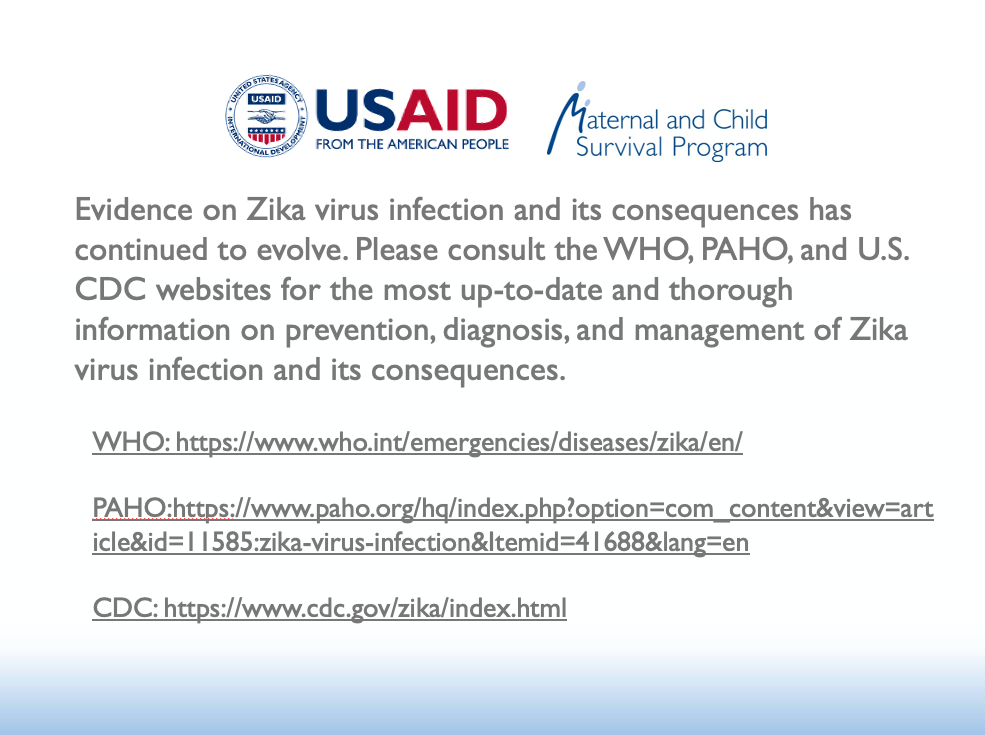
Evidence on Zika virus infection and its consequences has continued to evolve. Please consult the WHO, PAHO, and U.S. CDC websites for the most up-to-date and thorough information on prevention, diagnosis, and management of Zika virus infection and its consequences. […]
Read More…
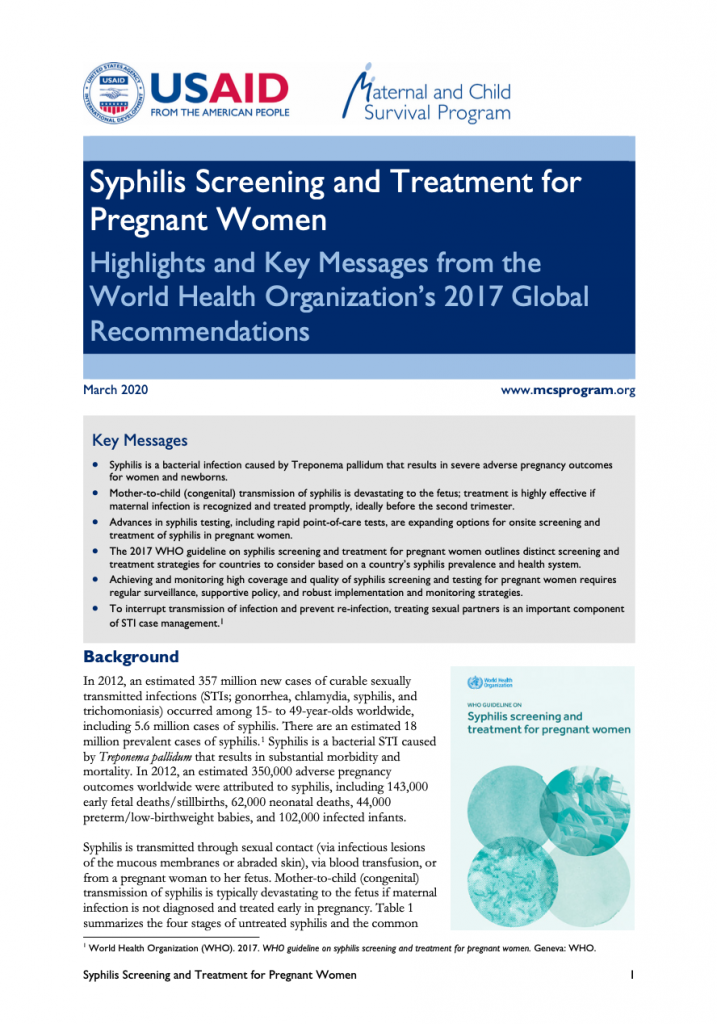
In 2012, an estimated 357 million new cases of curable sexually transmitted infections (STIs; gonorrhea, chlamydia, syphilis, and trichomoniasis) occurred among 15- to 49-year-olds worldwide, including 5.6 million cases of syphilis. There are an estimated 18 million prevalent cases of syphilis.1 Syphilis is a bacterial STI caused by Treponema pallidum that results in substantial morbidity […]
Read More…

More than 1 million people acquire sexually transmitted infections (STI) every day, worldwide. Chlamydial and gonorrheal infections are among the most common STI globally and are associated with significant health and financial burdens. In November 2018, the World Health Organization (WHO) released a standard protocol for conducting periodic prevalence assessments of chlamydia and gonorrhea, including […]
Read More…

The purpose of this operational guidance for respectful maternity care is to guide maternal and newborn health program implementers through a flexible, stepwise process to design, implement, and monitor efforts in their local context to improve women’s, newborns’ and families’ experience of care and eliminate mistreatment in facility-based childbirth. Also available in French […]
Read More…
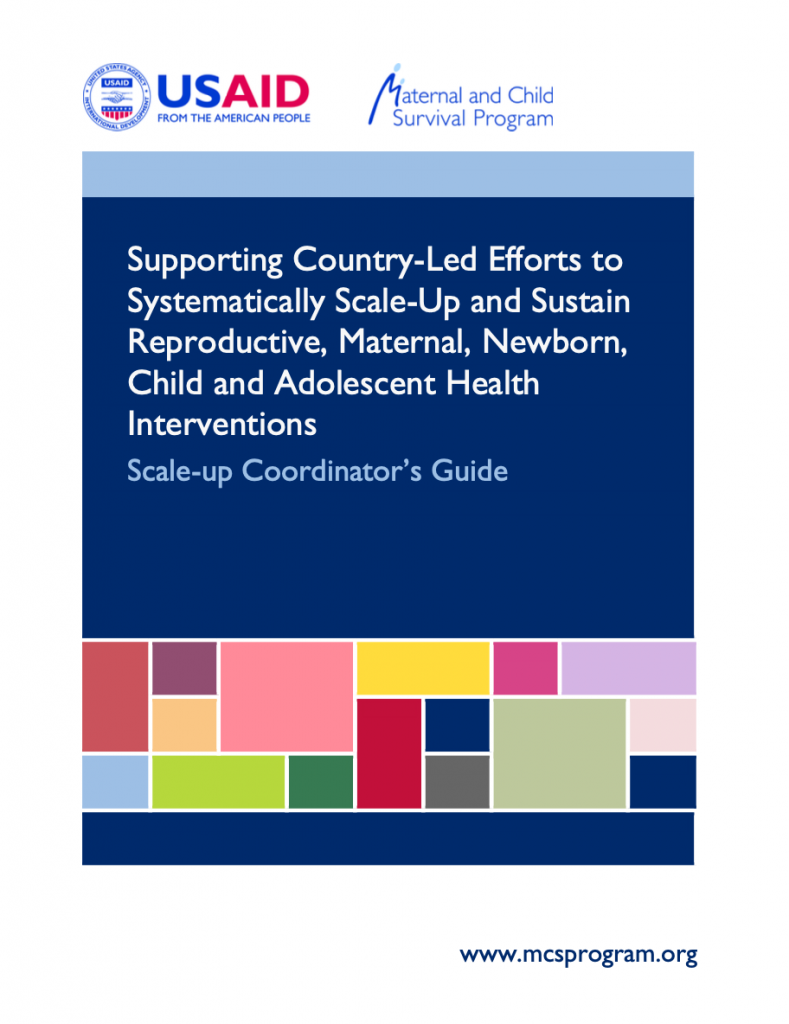
This guide is for those supporting a systematic process of scale-up. Although the process can be managed successfully in various ways, we wrote this guide specifically with the perspective that there is a “scale-up coordinator” or scale-up manager. The concept for this figure is based on that used by the United States Agency for International […]
Read More…
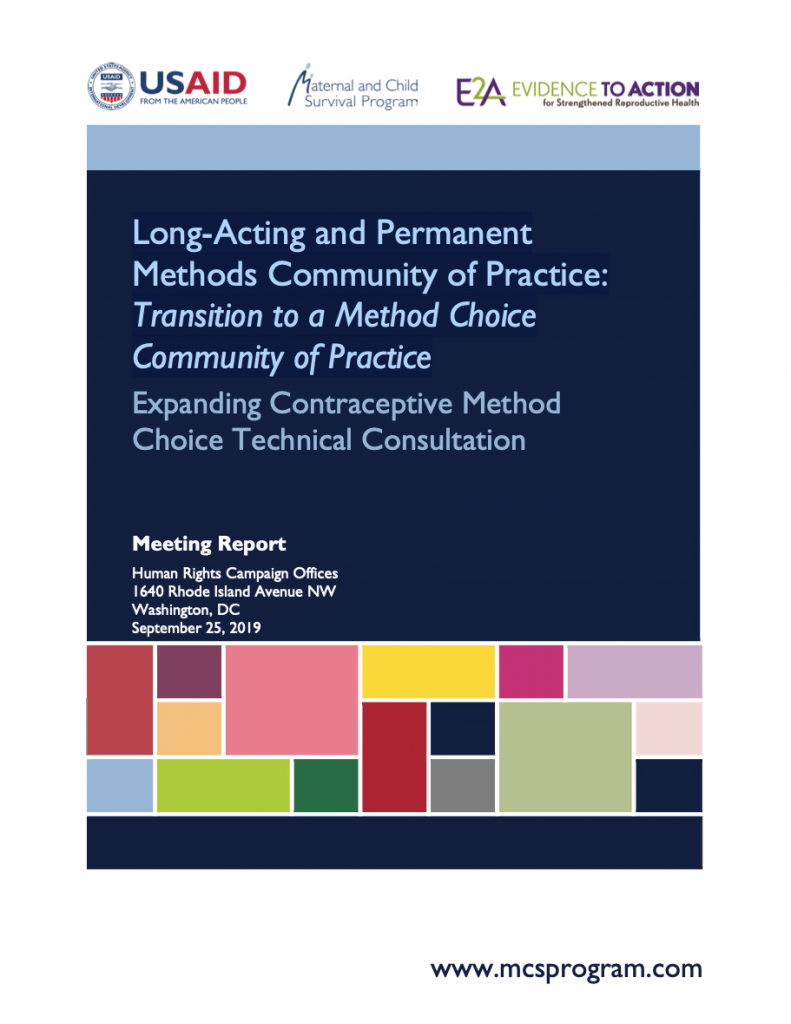
Approximately 214 million women of reproductive age in developing regions have unmet need for contraception—that is, they want to avoid pregnancy but are not using a modern contraceptive method.1 Expanding contraceptive options and access to voluntary family planning (FP) is critical to addressing this need. […]
Read More…
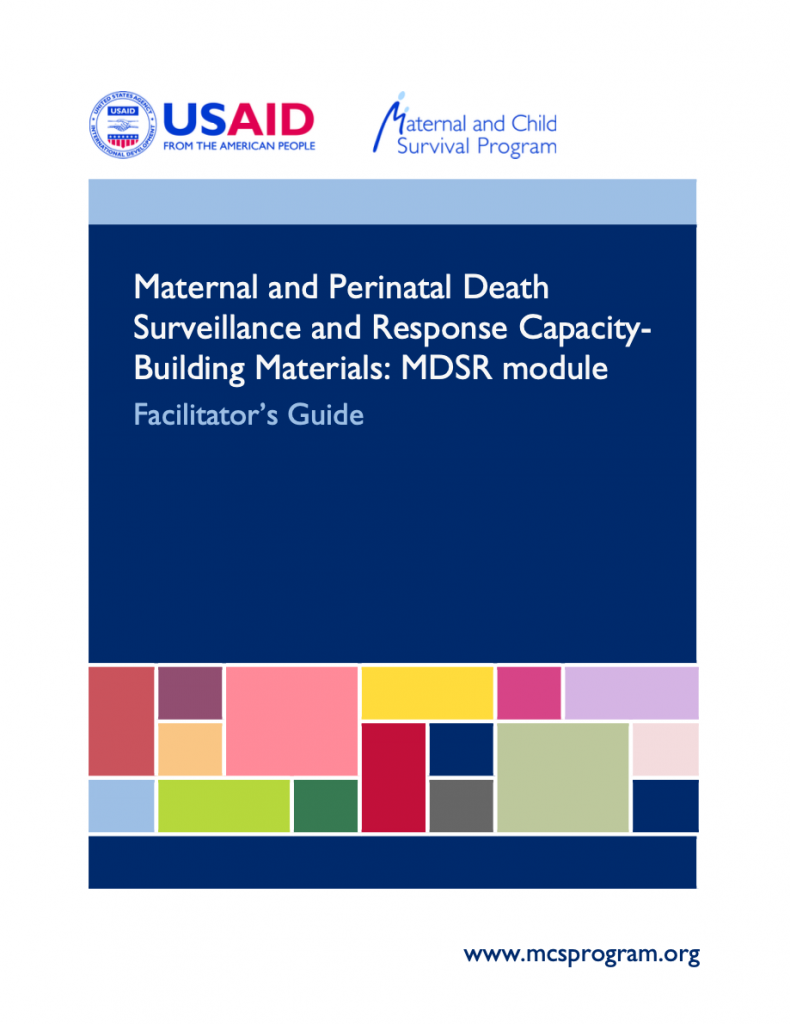
Several recent assessments have demonstrated that maternal and perinatal death surveillance and response (MPDSR) implementation lags behind national policy in many countries and that there are few global or local resources to build manager and health worker skills to implement MPDSR processes in low-resource settings. This module is part of a set of aligned MPDSR […]
Read More…

This report summarizes an impact modeling exercise that MCSP conducted to assess country progress as well as its contributions to changes in maternal, newborn, and child mortality trends. MCSP used the Lives Saved Tool (LiST) to estimate the mortality impact of the documented changes in coverage of MCSP-supported HIIs. […]
Read More…
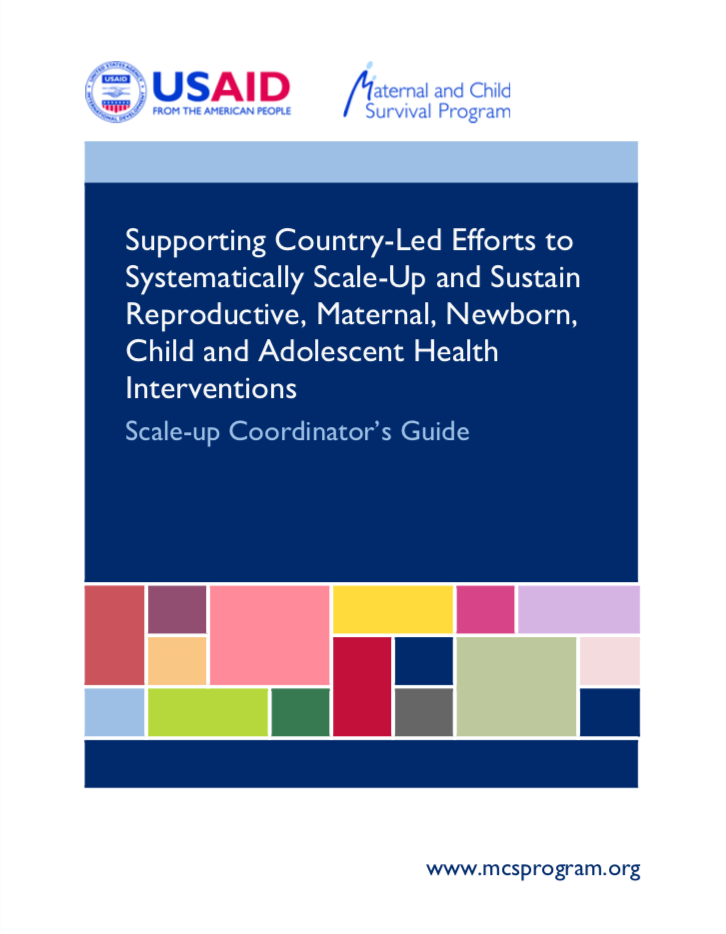
The Coordinators Guide and Toolkit are intended for those supporting a Ministry of Health-led systematic process of scale-up of one or more high-impact reproductive, maternal, newborn, child and adolescent health interventions, geared towards a scale-up coordinator or scale-up manager role. This guide is intended for use by those who support a country’s systematic process of […]
Read More…
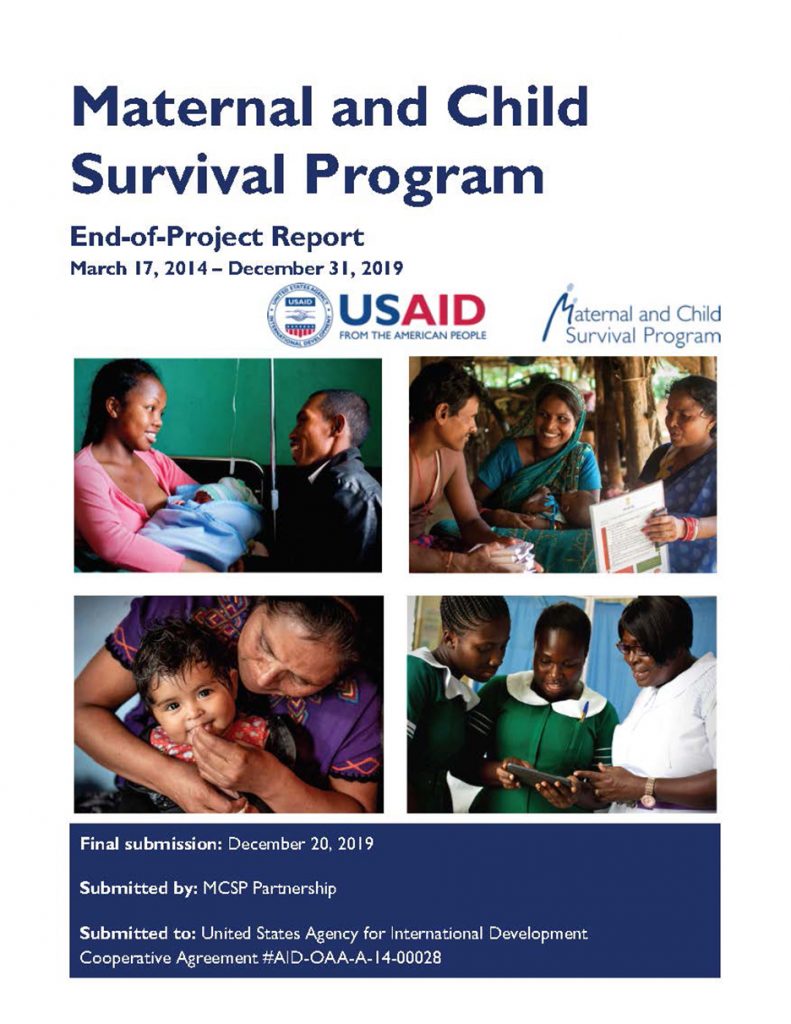
USAID’s flagship Maternal and Child Survival Program (MCSP) worked in more than 30 countries to introduce and support high-impact health interventions with the ultimate goal of preventing child and maternal deaths. This end-of-project report summarizes achievements across MCSP from 2014-2019. […]
Read More…










